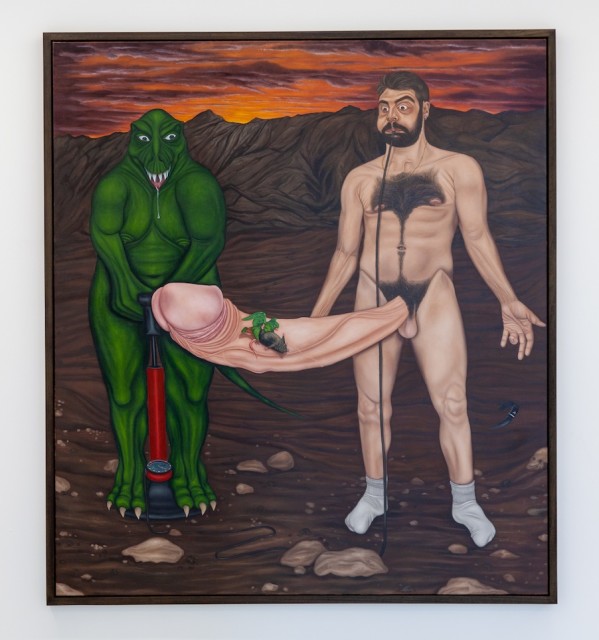Monsters cause trouble, they disturb definitions, they discombobulate what we think we mean. All of which is brave and wild, not to mention something like art’s task.
– Charlie Fox from ‘This Young Monster’ (2017)
Young Monsters explores the multifariousness of masculinity today through the artwork of Neil Haas, Irving Pascal, Glen Pudvine and Gray Wielebinski. In the present socio-political climate, the masculine experience is being questioned more than ever. At the same time, the once-fixed parameters of ‘traditional’ masculinity are being redrawn as binaries are broken and gender roles are blurred. In this exhibition, four artists question both the masculine and feminine attributes of the male body, their own as well as imagined fantastic monsters and prehistoric creatures. This multi-faceted approach to male subjectivity deconstructs gender norms and paves a new path to who can claim ownership of masculinity and whether humanity will fulfil what Donna Haraway calls ‘the utopian dream of the hope for a monstrous world without gender’.
As the feminist physicist Karen Barad postulates in her agential realism theory (2007), humans are not individually determinate with a fixed or given set of differences, but only materialise into individuals in ‘intra-actions’ or relations with each other and the environment. Therefore, gender needs no longer to be understood as an inherent attribute of the individual subject. In fact, the idea of a singular, fixed masculinity was rejected back in the late 1980s by a new sociology of masculinity led by sociologist Raewyn Connell who described a myriad of masculinities moulded by class, race, culture, sexuality and other factors, often battling against each other for authenticity. For Barad and Connell, there is no sense of fixity in terms of understanding masculinity and what human or species can exhibit these behavioural attributes that can vary dramatically across time and place.
The same is true of the artists in this exhibition.
In this exhibition, toxic masculinity is pronounced dead as new masculinities are performed across the gender and racial spectrum with all of their often-unspoken vulnerabilities, idiosyncrasies and intersectional hybridities by these ‘brave’ and ‘wild’ artists (to quote Charlie Fox one last time).




